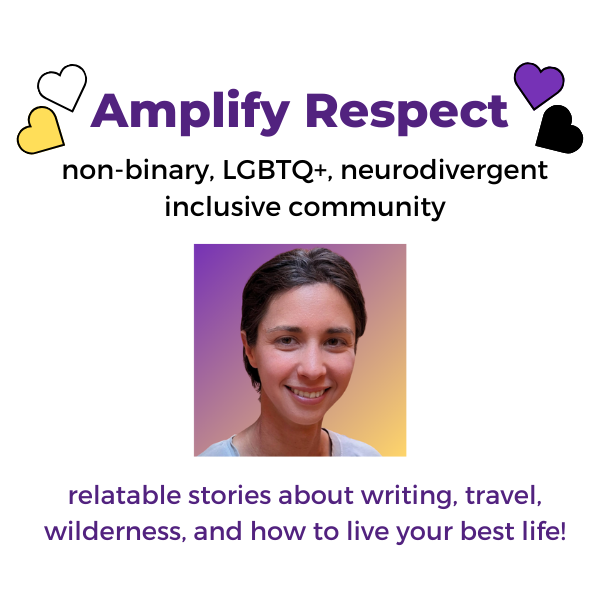I have multiple voices. The one I like best, so far, is the deeper, smiling, confident voice I use to teach aikido and talk when I feel comfortable. The one I hate most is the “can you help me, a scared little girl,” voice that comes out when I have to ask for customer service in person. My chest clenches up, my throat tightens, my mouth smiles although my eyes do not, and my voice practically squeaks.
My high, questioning voice cuts through background noise well, and whoever I’m talking to often hears me clearly and wants to help. But I don’t like who I’ve turned into. It reminds me of a fawn reflex, the other animal instinct along with fight, flight, and freeze.
Hi, I’m Rey, a nonbinary writer! Please subscribe for more stories and resources:
I wonder if I’ve unconsciously cultivated a childlike voice since childhood, that I use as a defense mechanism. People told me I looked like a child with an adult’s voice. I was “mature for my age,” meaning other kids disliked me. They viewed me with suspicion. I developed, then eliminated, the Jersey girl teenager voice, with the pitch going up like a question at the end of every sentence. Maybe a high voice helped me seem more normal, more personable.
I had thought I was stuck with my current voice, given that I’m not on testosterone. But, voice training techniques can help with not only feminization (which I was more familiar with) but masculinization. I purchased a voice training online class focused on trans people, Renée Yoxon’s Trans Vocal Exploration: Feminization, Masculinization, and Voice Beyond the Binary.
I learned from Renée that high or low pitch is not the most gendered characteristic of a voice. I thought the pitch of my voice was bothering me, but if I listen objectively, my voice is roughly in the (relatively narrow) range of most people’s speaking voices.
I don’t mind speaking on calls. My job involves speaking to a lot of people in a definitive and confident way — customers, engineers, management. But I don’t often have to hear my own voice played back to me. I was dreading listening to a meeting recording with me in it, so I could take notes on some problems we were troubleshooting during the call. I psyched myself up. I lined up some snacks. I put on my headphones. I pressed play. And…I didn’t hate what I heard. I heard…me, doing my job.
My new knowledge of the different characteristics of voices, combined with conscious awareness of what other people’s voices sound like, gave me an appreciation that people of various genders have different kinds of voices. As I get more comfortable with situations where I am speaking, my voice naturally relaxes into a sound I’m happier with. It’s a positive feedback loop — if I worry less, I sound better.
I still want to learn about how to modify my voice gradually, and figure out what’s possible and comfortable for me. But I’m grateful for what I’ve learned already — awareness and acceptance of my own current nonbinary voice.
If you want to read more about trans and nonbinary voices, please check out:
